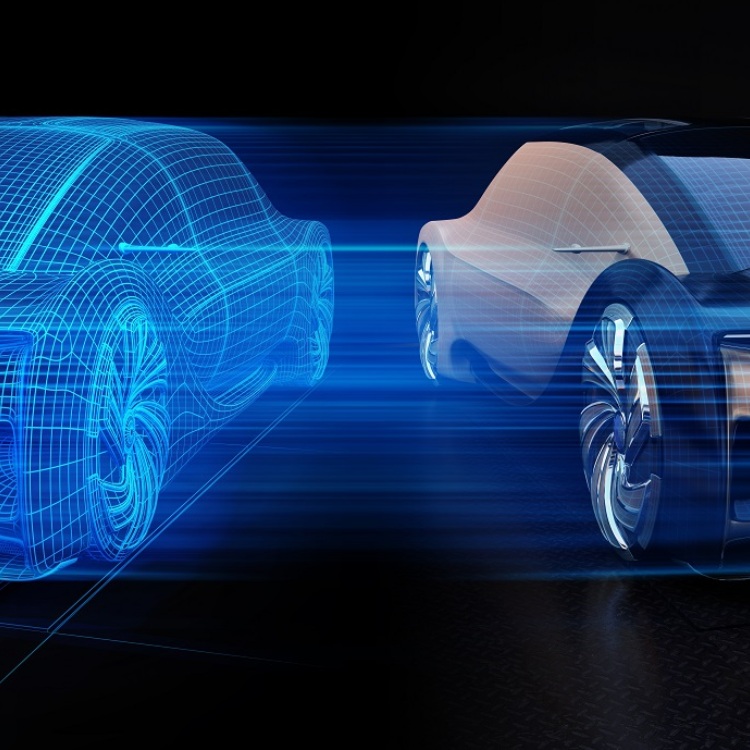In a massive warehouse in France, feeds from video cameras create a digital twin of every loading dock, where pallets from 45,000 spaces are moved into 200 trucks a day. Using computer vision-based image recognition applications, the system provides warehouse and headquarters personnel with real-time tracking of every pallet plus on-site equipment and other assets. Accurate, real-time visibility into what’s going on in the warehouse enables the company to prioritize shipments for three-day or even one-day delivery.
This may sound familiar because Amazon has similar proprietary computer vision technology, but this particular warehouse is operated by Schneider Electric, a European multinational company. The solution is a joint venture of consulting and digital services firm Hardis Group and Nutanix.
But computer vision is just the beginning. Soon digital twin solutions will be optimizing the logistics operations of factories, warehouses, and stores with AI and machine learning algorithms that can recognize speech, natural language, and even emotion.
The Digital Twin Comes of Age
Digital twins are digital versions of physical things, like a factory or a NASA spacecraft in flight, represented by data inputs. One of the most compelling new inputs for digital twins is image recognition.
“You can’t optimize what you can’t measure,” said Satyam Vaghani, the former vice president and general manager of IoT and artificial intelligence at Nutanix. “This type of digital twin solution helps make a previously un-trackable part of the supply chain trackable.”
Historically, warehouse and supply chain managers have relied on manual processes to track logistics. Now, technology can improve the logistics performance in warehouses, factories, and retail stores ― from the moment components, raw materials and products arrive on-site to their storage, shipment or purchase, Vaghani explained. Managers can seamlessly track and control routine processes through automation and IoT to improve efficiency, traceability and safety.
Computer Vision in the Supply Chain
Amazon warehouses started deploying computer vision applications in 2019 when workers switched from scanning product barcodes with handheld devices to letting AI cameras and scanners automatically track which products went into which bins. The company also uses computer vision applications for its delivery drones and Internet-connected doorbells. In Amazon Go retail stores, cameras and sensors track what customers buy and then send an electronic receipt a few minutes later.
Schneider Electric re-purposed its video surveillance system, using it to deploy a computer vision system called Vision Insights from Hardis Group and Nutanix. Sensor data from cameras fixed or embedded in systems such as automatic guided vehicles or carts is sent to the Nutanix Karbon management system in the Google Cloud Platform cloud service, where the Vision Insights application runs in a Kubernetes-as-a-service container.
Using automatic visual recognition technology to identify objects and assets in the video feed, the application can analyze activity based on comparing real-time and digital twin data.
Schneider now knows how many pallets pass through each shipping and receiving dock each day and how long each pallet remains at a dock. Alerts are generated if a pallet is left too long without being loaded. The system also tackles other processes (like identifying an operator not equipped with proper safety equipment), detects issues (like wet or damaged packages), and helps managers make the right decisions (send truck A to dock 713).
Adding Other Cognitive Inputs to the End-to-End Supply Chain
“Computer vision is just one part of how Hardis Group is modeling environments like warehouses," said Damien Pasquinelli, chief technology officer for Hardis Group. "We also gather data from ERP, warehouse management and other systems. We're creating a platform to aggregate a lot of different information, and visual recognition is just the beginning.”
What’s coming next? It may look something like Microsoft’s Azure Cognitive Services, a set of developer machine learning algorithms that provides voice and facial recognition and analysis of emotion and written content in addition to computer vision.
Solutions like Vision Insights that take advantage of cognitive services, combined with IoT and edge computing use cases and the cloud, are set to disrupt the warehouse management system market, which MarketsandMarkets valued at $2.4 billion in 2020 and predicts will more than double to $5.1 billion by 2025.
The next frontier is the transformation from managing the supply chain in specific places, at specific hours, to managing a global network in real-time, said Jerome Pedreno, business development manager for Hardis Group. Ensuring the availability of products requires an accurate accounting of stocks everywhere, end-to-end, he said.
“If traditional retail retains a slow logistics model from factories to warehouses, they’re dead,” Pedreno said.
“What is a large retailer’s main asset? Stores. They must use these assets to collect marketplace data, to offer new products…and differentiate themselves from companies like Amazon, if they want to survive.”





